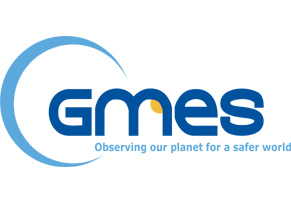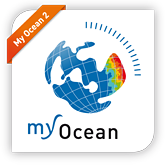Overview
SANGOMA provides the necessary link from operational applications for ocean monitoring and forecasting to new developments in data assimilation to ensure that future operational systems make use of state-of-the-art data-assimilation and related analysis tools. With this, SANGOMA relates to MyOcean that is the first EU project dedicated to the implementation of the GMES Marine Core Service for ocean monitoring and forecasting. Its currently second phase expands the pre-operational service and plans to move to full operations in 2014. Due to the nature of the call, R&D activities in MyOcean are limited to short-term developments closely linked to the operational needs.
In SANGOMA, existing modular data assimilation systems that have high flexibility in the type of ocean model and assimilation method will be extended by a European network of expert teams in advanced data assimilation. The systems will allow for efficient operational testing of the latest data assimilation methods, and quick comparison of assimilation methods for operational use. Furthermore, we will develop and implement modules that objectively determine the impact of existing and new observation types. Costumers of MyOcean products will be served by concentrating on data assimilation methods that deliver probabilistic information on the products. To this end, existing ensemble methods will be included and new methods that allow for nonlinear and non-Gaussian systems will be developed.
SANGOMA is structured into seven Workpackages:
WP 1: Harmonization of assimilation tools
In this work package, led by the partners from TU Delft, Netherlands, common important assimilation tools will be identified. In addition, required new tools will be determined. The tools, in general, provide additional functionality to the algorithms of the analysis step that either exist in the core of the assimilation systems or will be developed in WP3. A data model will be defined, which specifies design rules for a unified implementation of the tools. It is critical that the data model is sufficiently general, yet not too complicated. In particular, it has to be compatible with model used in MyOcean. With the harmonization, tools can be applied in the different modular assimilation systems used by the different partners.
WP 2: Sharing and collaborative development
The implementation work for the harmonization of existing tools and for new tools will be performed in this work package, let by the partners from the Alfred Wegener Institute, Germany. The implementations will comply with the specifications from WP 1 and will also include simple test routines. Both Fortran functions as well as Scripts for Matlab or Octave will be implemented depending on the type of functionality. The tools are categorized into the groups
- Diagnostic tools
- Perturbation tools
- Transformation tools
- Utilities.
WP 3: Innovative data assimilation techniques
In this work package, led by the partners from University of Reading, UK, research into new assimilation algorithms will be performed. The work will consider fully nonlinear algorithms, but will also examine the Gaussianity-assumptions of several algorithms. Standard implementations of the algorithms will be done for the different assimilation systems.
WP 4: Benchmarks
In order to test the performance of new assimilation algorithms and to compare the performance from different assimilation systems, several benchmarks will be defined in this work package, led by the partners from CNRS, France. The benchmarks will include several metrics to assess the performance of the assimilation methods as well as their statistical consistency.
The benchmark included as a small case is the Lorenz-96 system (Lorenz & Emmanuel, 1998). This model will allow for detailed system tests.
A benchmark of intermediate compexity is given by a double-gyre configuration of the NEMO ocean model. This model will be used with simulated observations to check statistical consistency in data assimilation methods when applied in a physical multivariate case.
Finally, a large-scale benchmark is given by a realistic configuration of the NEMO ocean model. This benchmark will simulate the North Atlantic Ocean at a resolution of 1/4 degree (Barnier et al, 2006) and will include an ecosystem model component (Ourmières et al., 2009), prefiguring the operational MyOcean systems. The large-scale benchmark will be used for selected simulations to assess new techniques with real data.
WP 5: Data assessment
This work package is lead by the partners from the Nansen Center for Remote Sensing (NERSC), Norway. The aim of this work package is to assess the impact of new remotely sensed data on model state estimates and their potential in a data assimilation setup. Thus, the work package serves to assess new data before it is used in an operational context. The new data encompasses surface salinity and temperature for large-scale ocean models. For regional models, coastal altimetry, high-frequency radar, and glider data are of interest. The observation systems and their impact will be assessed by algorithms that will also be developed in this work package.
WP 6: Knowledge transfer
The task of knowledge transfer encompasses several aspects. For example the maintenance of the web pages, the organization of workshops for operational users and for PhD students are included in this work packages, as well as the organization of the Liège Colloquium 2015. Further, best practices for data assimilation will be defined. Also, the software releases of the SANGOMA tools will be part of this work package. This work package is lead by the partners from University of Liège.
WP 7: Management
The project is coordinated by Jean-Marie Beckers from University of Liège. This workpackage contains all management duties, like meeting organization, reporting, etc.
Contact: Jean-Marie Beckers, University of Liege, AGO-MARE-GHER, Sart-Tilman B5, 4000 Liege, Belgium, jm.beckers at ulg dot ac dot be



